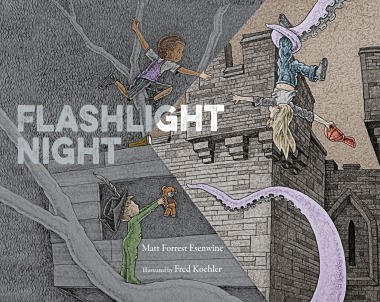 I make a living using my imagination.
I make a living using my imagination.
Whether it’s a poem, a picture book, or even a blog post, I love to stretch my mind and see what kinds of unusual, surprising, and creative stories and images I can come up with.
But I have to admit…it is very, very hard for me wrap my head around the fact that my debut picture book is ONE YEAR OLD today!
Flashlight Night (Boyds Mills Press) was officially published on Sept. 19, 2017 – and I could never have imagined the response it would receive nationally. I knew I liked it, of course; I knew illustrator Fred Koehler had done a phenomenal job on his end, and I knew our editor, Rebecca Davis, had performed an amazing juggling act between the two of us – balancing my story with the story Fred was telling via his illustrations.
I also had no idea, once I completed the final draft, that it would even get picked up by a publisher; nor could I possibly fathom how long it would take to produce, once the contract was signed. It might be the book’s one-year birthday, but the idea for the book is four years old now! So to give you a little perspective on the life of a picture book, I thought I’d present a timeline of the life of Flashlight Night:
- August, 2014: Staring at my car’s headlights while driving home late at night from an SCBWI Meet-Up in Westford, MA, the words, “Flashlight opens up the night” pop into my head. As I toss this phrase around in my head I eventually come up with the opening and closing of…something. A poem? A book? Nothing??
. - Sept. 9, 2014:
 After a couple of weeks of writing and revising, I complete the final draft of Flashlight. (That’s right, no “Night.” It looked a little different then…
After a couple of weeks of writing and revising, I complete the final draft of Flashlight. (That’s right, no “Night.” It looked a little different then…
. - Oct. 7, 2014: With a hope and a prayer (and crossed fingers) I send the manuscript off to Rebecca Davis, the editor at Boyds Mills Press. Rebecca had seen some of my previous poetry but had not purchased anything up to this point. Before I email the manuscript to her, I change the title to Flashlight Night, so that there is no confusion with another book, Flashlight (Chronicle), which had just been published the week before I wrote my own flashlight book! How’s THAT for timing, huh?
. - Dec. 2014: The Flashlight Night manuscript is awarded the New England SCBWI’s Peg Davol Scholarship for unpublished authors and receives a critique from an established, published author.
. - Jan. 16, 2015: Five days after my critique, I receive a call from Rebecca, telling me she and her editorial board all love the manuscript. I am elated – not just because I had finally sold a full-length book manuscript, but because, had I followed the critiquer’s suggestions, the book would not be the book it is today. Indeed, it might not have even gotten published!
.
This is why critiques can be helpful, but only if an author takes the advice that makes sense to him/her. If you have read Flashlight Night, compare my notes with the book itself, and note how far it deviates from all the recommendations I was given:

- May 18, 2015: I sign the contract for Flashlight Night!
. - June, 2015: After seeing his concept

Image © 2015 Fred Koehler, all rights reserved, reprinted with permission (click to enlarge) for the book’s sub-narrative, which includes the flashlight beam illuminating the children’s adventure, Rebecca signs Fred Koehler to illustrate our book. She shares with me Fred’s initial sketch of what he’d like to do with the book, and we agree it’s ingenious. (By the way, Rebecca and I have already gone through four text revisions at this point – and more are on the way!)
. - Spring, 2016:

(click to enlarge) Fred takes a 2-week trip to the United Kingdom to sketch and photograph the countryside, the shipyard, the ocean, and museum artifacts in preparation. Much of what he sees – including the trail into the woods, the clipper ship, and the rocky arch where the Kraken hides – ends up in the book. I tell Fred that I should have taken the trip first, THEN written the book – what a sweet tax-write off!
. - July-Dec. 2016: Dummies of the book continue to be put together and taken apart, revised and edited. By early Dec., we realize that my original ending,“all is still within, without,” is simply not going to work with Fred’s illustrations, so I change the line to “adventure lingers, stirs about.” (It’s called “collaboration,” folks!) By Dec. 14, we have what we believe is the final dummy version of the entire book, text and illustrations.
. - March 2017: And now we have a cover! The colors are a little bolder than they will eventually be, but it looks great:
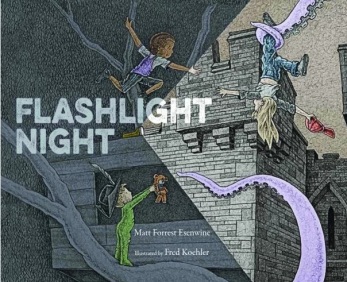
. - March 6, 2017: I am asked to fill out a questionnaire with social media contacts, bookstore info, and other folks I know who might be able to help in the promotional effort. (Wow, I thought. Things are gettin’ real…)
. - April 12, 2017: F&G’s arrive.

(click to enlarge) Short for “folded and gathered,” F&G’s are printed up following approval of a book’s final proofs. They look exactly the way the book will look once it’s bound, yet allow publishers’ marketing and sales teams to mail the books to buyers and trade journals without the heavy cover…shipping costs can get pretty hefty, as you can imagine!
. - April-May 2017: Promotions get underway: full-page display ads in industry catalogs, inclusion in the Boyds Mills Press’ catalog…things are DEFINITELY getting real now. It feels like there is a new surprise everyday!
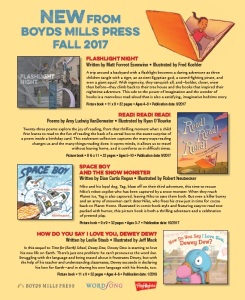

- May 26, 2017: We receive our first review, and it’s a whopper. Kirkus calls Flashlight Night a “rousing read” and awards it a coveted Starred Review. As blown away as I am at this news…I am now eager to learn what others think of it!

- May 26, 2017: Flashlight Night flashlights arrive, to be distributed to librarians
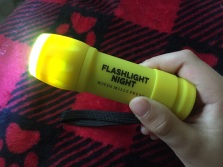 and book buyers across the country! Yes, May 26 was a good day.
and book buyers across the country! Yes, May 26 was a good day.
. - June 2, 2017: Representatives of Boyds Mills Press attend Book Expo America, where just about every book publisher is showing off their upcoming catalog. I nearly fall over when I see the banner:

- June 26, 2017: Two days after my birthday, my author copies arrive. It was the best non-birthday birthday gift ever, in the history of ever.
. - July-August 2017: The industry reviews start coming in! One after another, they sing the praises of our little book: Publisher’s Weekly states that my text and Fred’s illustrations “don’t just lobby for children to read—they show how readers play;” The Horn Book calls Flashlight Night “an old-fashioned, rip-roaring imaginary adventure; and Booklist describes it as “imaginative,” “surprising,” and “fantastical.”
. - Sept. 1, 2017: The School Library Journal reviews the book, calling the verse “incantatory.” The reviewer’s final verdict is glowing: “A simple idea that’s engagingly executed and would be an excellent, atmospheric read for sleepovers or backyard campouts. A good choice for most collections.” I’m particularly proud that the text is referred to as a poem…which is how it first came to be and the genre that got me into children’s writing in the first place.
. - Sept. 7, 2017: The National Book Launch takes place at Porter Square Books in Cambridge, MA – just

Photo courtesy of Josh Funk (click to enlarge) outside of Boston. Although the book doesn’t officially come out until Sept. 19, this date had been arranged earlier in the year, when we thought the book was going to be released earlier. It is a dual book launch with my friend and fellow author Carol Gordon Ekster, who was also celebrating the release of her new book. The event is well-attended, we sell lots of books, and I breathe a sigh of relief! It is the fist of many signings, and I can’t wait to continue the book tour throughout southern NH and northeastern MA.
. - Sept. 19, 2017: Flashlight Night makes it debut in the world!! (And on International Talk Like a Pirate Day, no less – how more perfect could that be?!?) A huge blog tour helps support the promotional effort with interviews, giveaways, and lots of great press – including an appearance by Fred Koehler on KidLitTV. (Book signings, readings, and school visits, oh my!) More than THREE YEARS after I first started tossing words around in my head to create my story, anyone and everyone who wants to have a copy, can buy one anywhere. It still feels surreal.


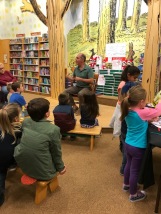


. - Sept. 22, 2017: Three days after its release – yes, a mere THREE DAYS after its release, Flashlight Night shows up on Amazon’s “Best Books for Kids” list:
- Sept. 26, 2017: Unbeknownst to the publisher, we receive a tremendously positive review from Shelf-Awareness, in which the reviewer compares our book – favorably! – to Maurice Sendak’s Where the Wild Things Are. Talk about compliments that can humble a person.
. - Sept. 27, 2017: More publicity! This ad
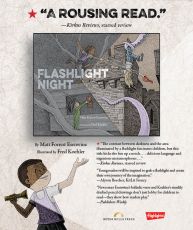
(click to enlarge) was for an email blast for the online book retailer Mackin. With so many positive reviews, our publisher wanted as many potential customers as possible to see them.
. - Oct. 7, 2017: Illustrator Fred Koehler informs me that The Polk Museum of Art in Lakeland, FL is installing an exhibit featuring his original artwork for Flashlight Night. Each piece is to be framed and mounted on the wall, along with my text, in such as way as to allow a viewer to follow the story page-by-page:
- Nov. 2017: I discover that Flashlight Night is one of Amazon’s best-selling children’s books about libraries and reading…and my head swells a wee bit more.
. - Dec., 2017: Another review and another (major) list! The review is by the School Library Connection, which also favorably compares the book to Wild Things, praising its “poetic rhyme” and “creative illustrations.” The list is the New York Public Library’s “Best Books for Kids 2017,” which also includes titles like Dan Santat’s incredible After the Fall (Roaring Brook Press) and the Margaret Wise Brown Prize-winning Things to Do (Chronicle Books) by my friend Elaine Magliaro. Shortly thereafter, Flashlight Night shows up as a NY Public Library Staff Pick, as well!
. - Jan. 2018: Boyds Mills Press learns that the Kansas chapter of the NEA has selected Flashlight Night to be included in its 2018 Reading Circle Catalog,
 an honor I do not take lightly. We also continue discovering positive reviews from random kidlit, parenting, and educational bloggers, and I make a point to leave a comment on each one of them, thanking them for their support.
an honor I do not take lightly. We also continue discovering positive reviews from random kidlit, parenting, and educational bloggers, and I make a point to leave a comment on each one of them, thanking them for their support.
. - March 20, 2018: One of the aforementioned bloggers, author Jen Betton, uses Flashlight Night as mentor text for discussing the interplay of text and illustration. The fact that anyone would use something I wrote to teach others how to write is an indescribable honor.
. - March 23, 2018: I deposit my very first royalty check!

That’s right…makin’ bank, baby! .
Well, ok…it wasn’t QUITE this much. But I was thrilled – not just because I had made some money, but because of what it meant…
.
You see, many picture books don’t even make back the advance a publisher pays the author. To explain, an advance is against royalties; it’s like getting an advance on your paycheck. The publisher pays you up-front, then once you have sold enough copies to cover the advance, you begin receiving royalties. So the fact that we not only made back the advance, but made it back and then some within 5 months was astonishing. Keep in mind, compared to highly-successful, well-established authors like Jane Yolen and Mo Willems, I’m a relative unknown – so the book’s success is significant. I was so grateful to editor Rebecca Davis and Boyds Mills Press for taking a chance on Flashlight Night.
. - Summer 2018: Our little book starts popping up on Summer Reading Lists! You can learn more at my blog post HERE.
. - What’s next: The book continues to be discovered by parents, children, librarians, and teachers. I am always delighted when I see a new review or hear about the book showing up on a reading list. While I continue to do
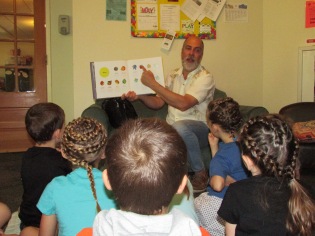 book signings for Flashlight Night, Don’t Ask a Dinosaur (Pow! Kids Books, 2018), and the poetry anthologies I’ve been a part of (see below for all the covers), I also love visiting schools to talk about the writing process, poetry, and how writing & illustrating go hand-in-hand when creating picture books.
book signings for Flashlight Night, Don’t Ask a Dinosaur (Pow! Kids Books, 2018), and the poetry anthologies I’ve been a part of (see below for all the covers), I also love visiting schools to talk about the writing process, poetry, and how writing & illustrating go hand-in-hand when creating picture books.
.
We tell our kids to read and write for 12+ years in school, yet rarely do we tell them they can actually do it for a living…that they could be an author when they grow up. Well, I’m here to tell them they CAN! So if you are interested in having me visit your school, please email me at matt (at) mattforrest (dot) com and we can chat! (You can get more info HERE)
Thank you for following this blog and for supporting Flashlight Night. I never knew how many people would see it, read it, love it…and its success has made  an immense impact on my life. I’m genuinely grateful to every single person who has read it, purchased it, shared it, or somehow promoted it. From teachers and librarians, to parents and bloggers, to book sellers and reviewers – there are just too many people to thank individually for their support.
an immense impact on my life. I’m genuinely grateful to every single person who has read it, purchased it, shared it, or somehow promoted it. From teachers and librarians, to parents and bloggers, to book sellers and reviewers – there are just too many people to thank individually for their support.
So please know that you are a part of this timeline I’ve shared – at every point along the way. And this goes beyond Flashlight and Dinosaur and all the other books yet to come. None of what I do can been accomplished without the help and encouragement of folks like you. And I hope you’ll remain a part of this author’s journey on which I embarked 8 years ago.
Because I have a feeling we’re only getting started!
=========================================================
“Hang on there just a second, Matt –
where’s this GIVEAWAY you told us about??
Ah, yes – the giveaway! I have THREE personally-signed copies of Flashlight Night I’m going to give away, in three different ways:
- Leave a comment below and let me know you’d like to be entered in the drawing! I’ll pick one name at random on Thursday, Sept. 27 and announce the winner on my Poetry Friday blog post the next day.
. - Share this post on Facebook or Twitter! Just be sure to tag me, so I know…and I’ll pick another name at random on Thursday, Sept. 27.
. - Leave a review on Amazon or Goodreads! Now, before you start talking trash and calling me out for fishing for compliments, let me state this clearly: if you don’t like Flashlight Night…leave a review, anyway! I am by no means offended by negative criticism. Not everyone likes every book. While most reviews have been positive, there are some readers who have been completely underwhelmed by our effort. And that’s ok; we can still get along. (Why you would want to leave a negative review in the hopes of getting a free copy is beyond me, but to each his own.) Out of all the reviews posted from today through Sept. 27, 6pm EDST, I’ll pick one name at random – and will leave a comment on your review, so you’ll know you won. So be sure to check your review on Friday, Sept. 28!
Oh, and if you’d like to have TWO MORE CHANCES to score free stuff, Laura Sassi is featuring an interview with Fred Koehler and Yours Truly on her blog today – she’s giving away a free signed copy of Flashlight Night AND a package of cool swag from the fine folks at KidLitTV!
=========================================================
Ordering personalized signed copies online? Oh, yes, you can!
You can purchase personalized signed copies of Flashlight Night, (Boyds Mills Press, 2017), Don’t Ask a Dinosaur (Pow! Kids Books, 2018), and nearly ALL of the books or anthologies I’ve been part of!
Just click the cover of whichever book you want and send the good folks at MainStreet BookEnds in Warner, NH a note requesting the signature and to whom I should make it out to. (alternatively, you can log onto my website and do the same thing) They’ll contact me, I’ll stop by and sign it for you, and then they’ll ship it. Try doing that with those big online booksellers! (Plus, you’ll be helping to support local book-selling – and wouldn’t that make you feel good?)
=========================================================
 Thank you to everyone for your support!
Thank you to everyone for your support!
- NY Public Library’s “100 Best Book for Kids 2017” AND “Staff Pick!”
- KIRKUS Starred review!
- Kansas NEA Reading Circle Recommended Books!
- “Best Reads of 2017,” Unleashing Readers
- Amazon “Best Books of the Month,” Sept. 2017
- Positive reviews from Horn Book, School Library Connection, Booklist, Publisher’s Weekly, and Shelf-Awareness
.
.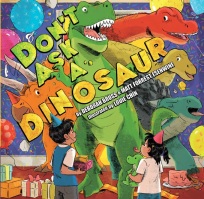
- “Rollicking rhyme!” – Booklist
- “A wild romp!” – Parenting NH Magazine
- “Cute…intriguing…4 out of 5 stars” – Tulsa Book Review
- “Rhythmic…funny and informative” – Unleashing Readers
=========================================================
Did you like this post? Find something interesting elsewhere in this blog? I really won’t mind at all if you feel compelled to share it with your friends and followers!



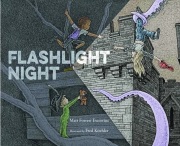


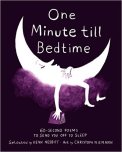








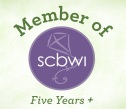






 I wasn’t planning on a follow-up to
I wasn’t planning on a follow-up to 


 But when I see a request to provide multiple takes in different styles because the seeker isn’t quite sure what he or she wants…that indicates to a voice artist that the person they may end up working with is probably going to be very difficult to please.
But when I see a request to provide multiple takes in different styles because the seeker isn’t quite sure what he or she wants…that indicates to a voice artist that the person they may end up working with is probably going to be very difficult to please.



 I am often asked how one starts a career doing voiceovers or writing children’s books. As someone who has been doing voice work and audio editing for 25+ years, I’m happy to share advice, tips, and some guidance.
I am often asked how one starts a career doing voiceovers or writing children’s books. As someone who has been doing voice work and audio editing for 25+ years, I’m happy to share advice, tips, and some guidance.



 Letting down a customer or client really is so easy, one can do it without even realizing it. After all, it’s simple to be presented with a problem, take the path of least resistance and correct it, and expect the customer to be happy. This is what young folks new to the workforce seem to get taught.
Letting down a customer or client really is so easy, one can do it without even realizing it. After all, it’s simple to be presented with a problem, take the path of least resistance and correct it, and expect the customer to be happy. This is what young folks new to the workforce seem to get taught.
